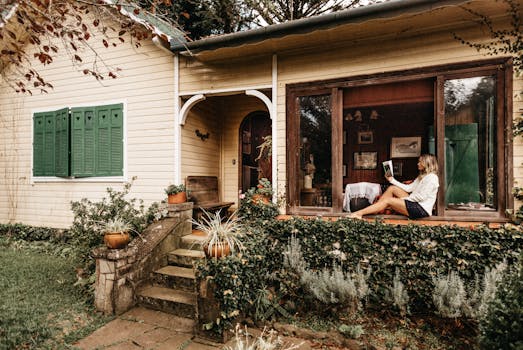Restoration Ecology: Principles for Urban Professionals Seeking Nature's Stress Relief
The housing market can be intimidating for newcomers. Many first-time buyers feel overwhelmed by the complex terminology and processes involved. However, there are numerous government assistance programs available that can help make homeownership more accessible. Working with experienced professionals can help you navigate these challenges effectively. Gardening offers therapeutic benefits, allowing you to focus on nurturing life while enjoying the outdoors. Studies show that spending just 30 minutes in a garden can lower stress and improve mood. Plus, it’s rewarding to see your plants thrive (and it’s a great excuse to get your hands a little dirty!).

Forest Bathing and Mindful Nature Walks
Forest bathing and mindful nature walks are excellent ways to practice restoration ecology. These practices encourage you to slow down and appreciate the natural world around you.
Start by finding local urban trails or parks where you can walk mindfully. Pay attention to your surroundings—the sounds of birds, the rustle of leaves, or the smell of flowers. This awareness can help you feel more connected to nature and reduce stress. You might be surprised to learn that walking in nature has been shown to improve mood and cognitive function.
Embrace Restoration Ecology for a Balanced Urban Lifestyle
Incorporating restoration ecology into your life can lead to improved mental health and reduced stress. By understanding its principles, urban professionals can unlock the healing power of nature. Whether through gardening, forest bathing, or visiting local parks, there are countless ways to connect with the natural world. Additionally, exploring city living and well-being can provide insights into how urban environments affect mental health.
Remember, taking time to enjoy nature is not just good for you; it also benefits the environment. So, get outside, breathe in the fresh air, and embrace the beauty of restoration ecology in your daily life.

FAQs
Q: How can I effectively prioritize which ecosystems to restore when resources are limited?
A: To effectively prioritize ecosystem restoration when resources are limited, focus on areas that offer the greatest potential for biodiversity recovery and carbon sequestration, while also considering the involvement and knowledge of local communities. Assess the ecological, economic, and social benefits of restoration projects to ensure they align with both environmental goals and community needs.
Q: What are the biggest challenges I might face when applying principles in urban environments?
A: The biggest challenges when applying restoration ecology principles in urban environments include limited space for implementing ecological designs, the presence of existing infrastructure that may hinder natural processes, and the need to engage and educate diverse communities about ecological practices and their benefits. Additionally, urban pollution and disturbances can complicate efforts to restore native ecosystems and biodiversity.
Q: How can I measure the long-term success of a restoration project, and what benchmarks should I consider?
A: To measure the long-term success of a restoration project, consider benchmarks such as biodiversity levels, ecosystem health indicators, habitat connectivity, and the presence of native species. Additionally, assess community engagement and the project’s sustainability in managing resources effectively over time.
Q: In what ways can community involvement enhance the outcomes of a project?
A: Community involvement can enhance the outcomes of a restoration ecology project by fostering a sense of ownership and responsibility among local residents, which encourages ongoing participation and stewardship. Additionally, collaboration with community members can provide valuable local knowledge, resources, and support, ultimately leading to more effective and sustainable restoration efforts.
